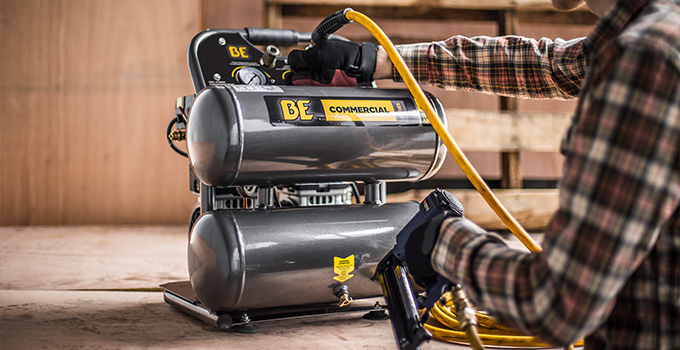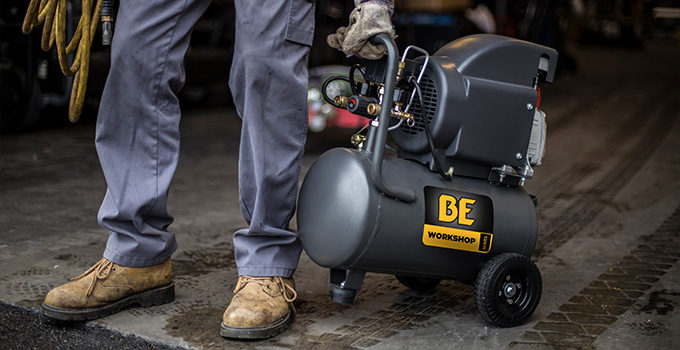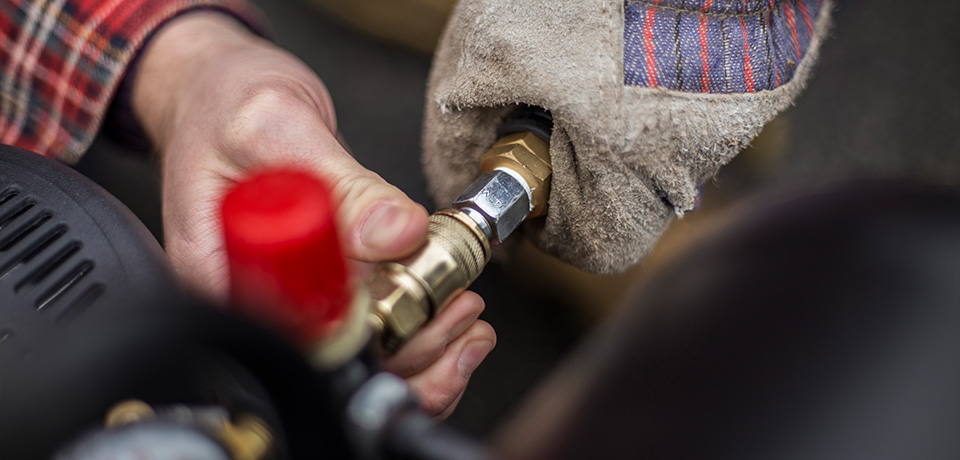Air compressors are a handy piece of equipment, particularly on the farm. Not only do they help fill tires on your machinery, but they can help with cleaning and operating equipment like impact wrenches, nail guns and paint sprayers.
If you’re in the market, review these five factors of air compressors:
1. Horsepower
Horsepower ratings are a guide to how much air pressure can be generated. Higher air pressure, measured in pounds per square inch (PSI), means the compressor can store more air in the tank, allowing you to operate air tools longer before the compressor kicks in.

2. Cubic feet per minute
Cubic feet per minute (CFM) is the volume of air a compressor delivers at specific PSI levels. The most important CFM rating on smaller compressors is at 90 PSI because that is the pressure that is required to run most tools. A higher CFM is required for tools that require greater air volume such as air wrenches and nail guns.
3. Tank size
A compressor tank only stores air. The more important consideration is to have a big enough pump and motor to produce as much air as you need. Smaller tanks around four to six gallons are suited for projects that don’t require continuous use such as air nailers. For jobs that require more continuous flow, such as spray painting and sanding or impact wrenches, a bigger tank size is better.

4. Air pressure
Single-stage compressors build pressure up to a shut-off around 135 PSI and are suitable for smaller air tools. For larger tools, an industrial two-stage compressor builds up to about 90 PSI in the first stage and then the second stage cylinder pressures up to about 175 PSI.
5. Duty cycle
Duty cycle is the amount of time the compressor is allowed to run before overheating. It is expressed as the percentage of time the compressors runs in a 10-minute period. A 50 per cent duty-cycle rating means the compressor can run five minutes in a 10-minute period. A higher duty-cycle rating is required for tools that require more continuous operation.
Putting all the considerations together, assess the types of air tools you will be operating. Choose the air tool with the greatest CFM at the highest PSI required. Add 50 per cent to the required CFM as a buffer. For example, if a one-half inch impact wrench requires 5.0 CFM at 90 PSI, then the compressor should deliver around 7.5 CFM at 90 PSI.
Talk to your local Co-op Equip Team member on how to choose the right air compressor for your farm.

